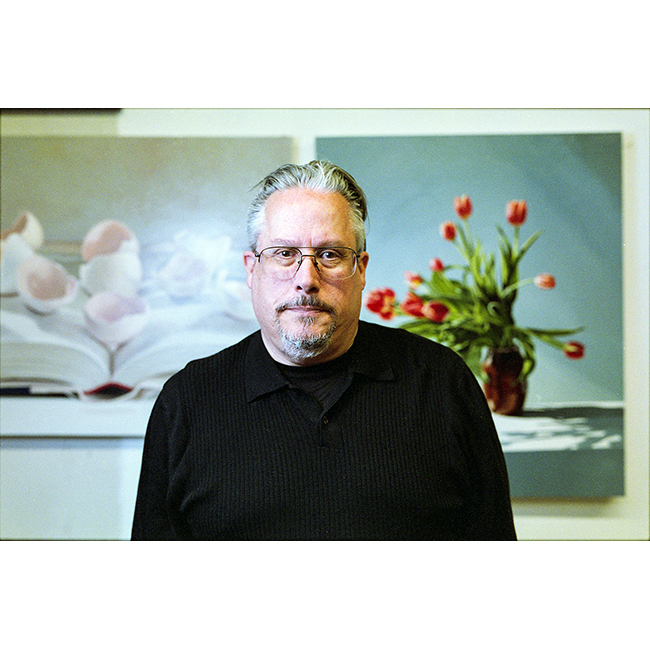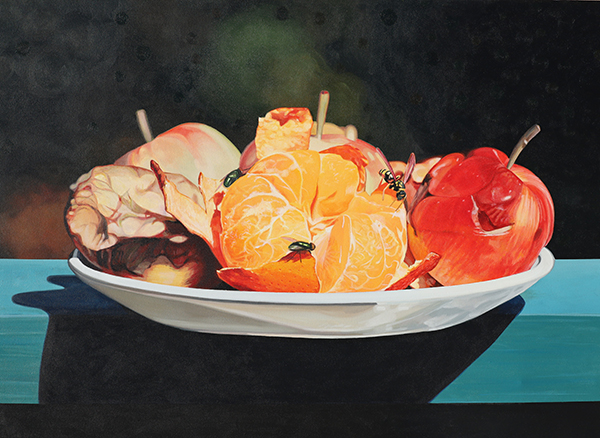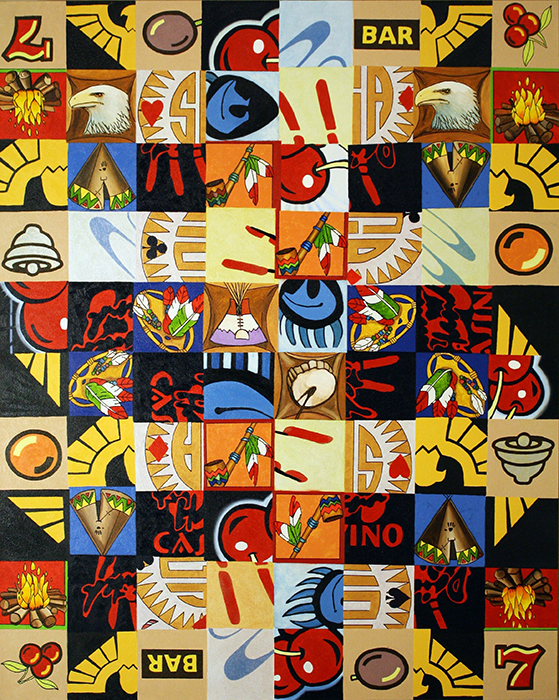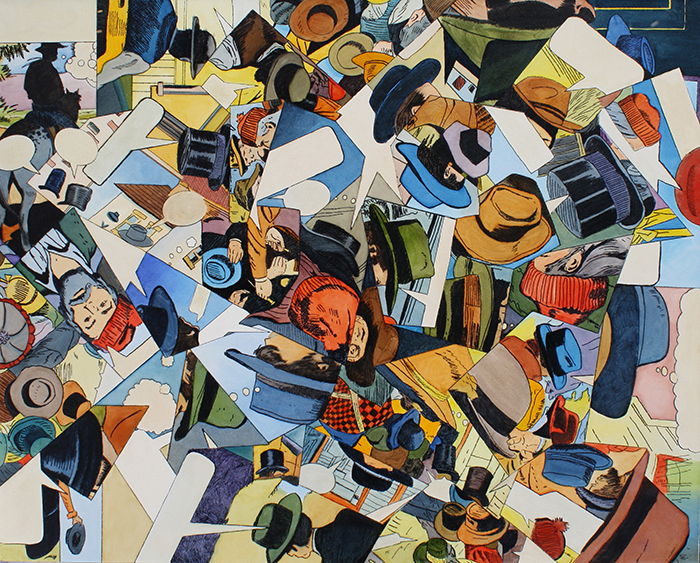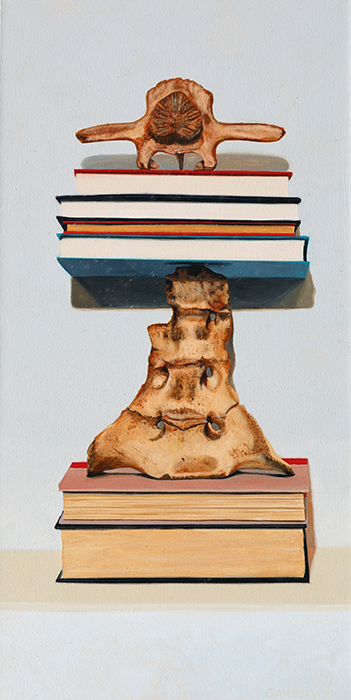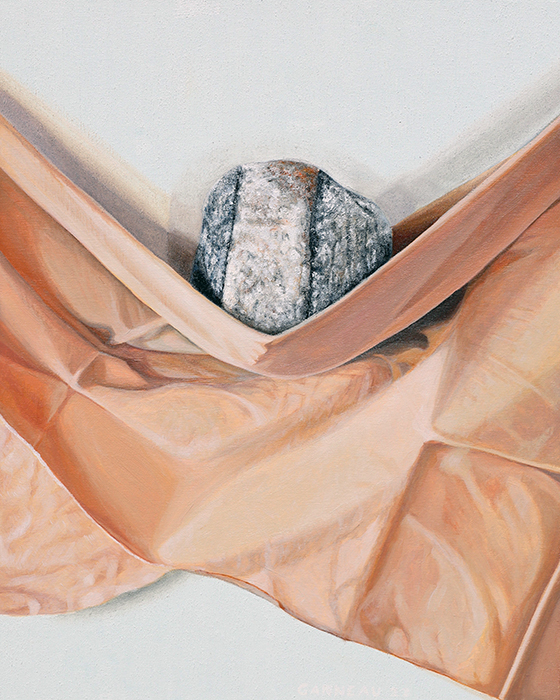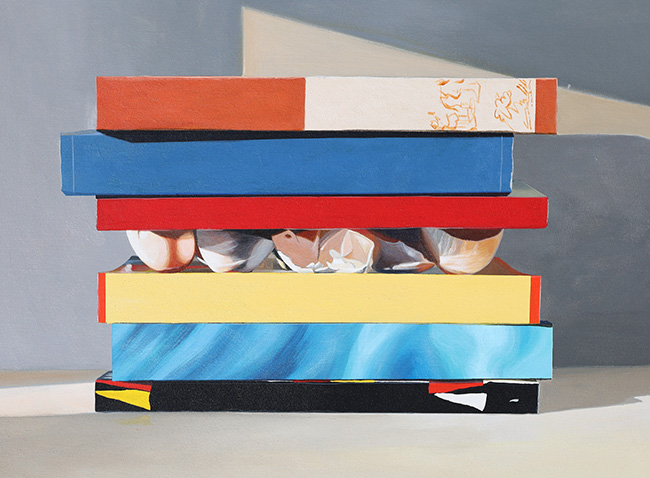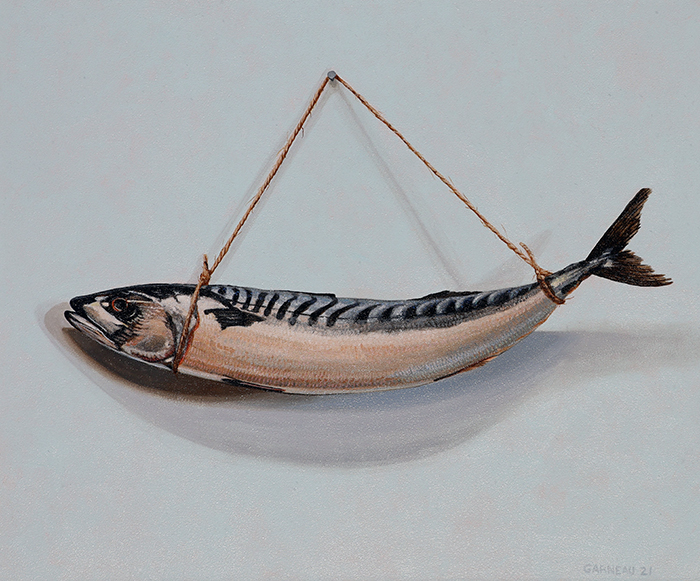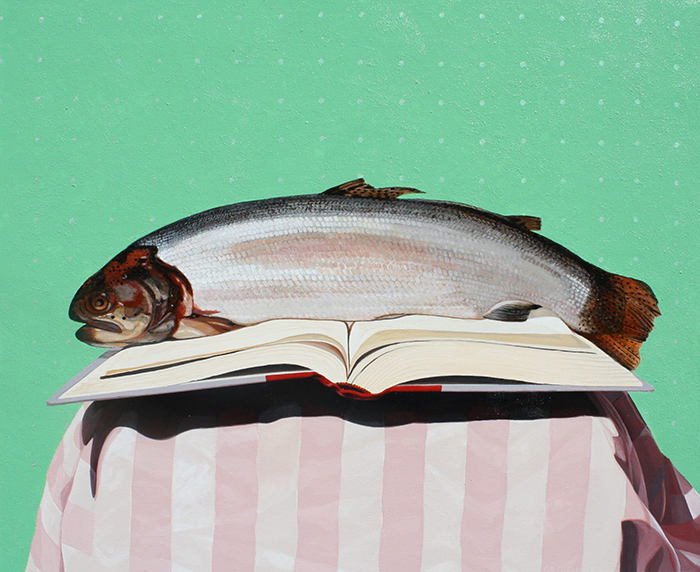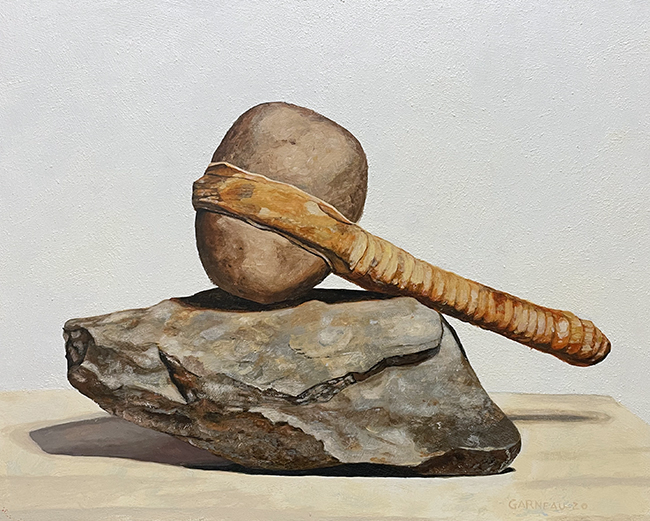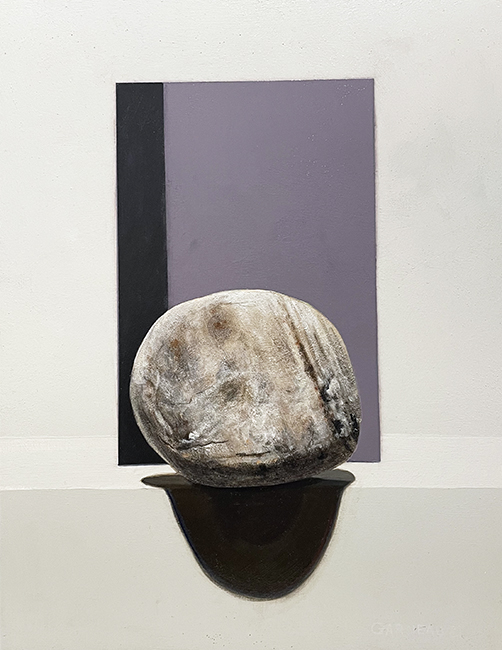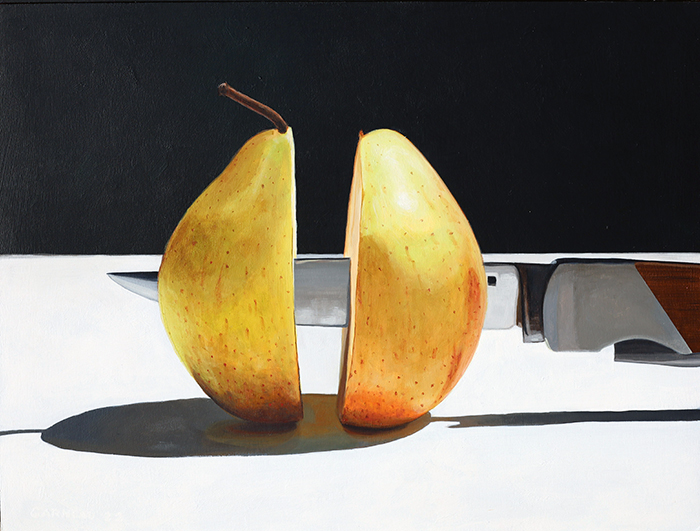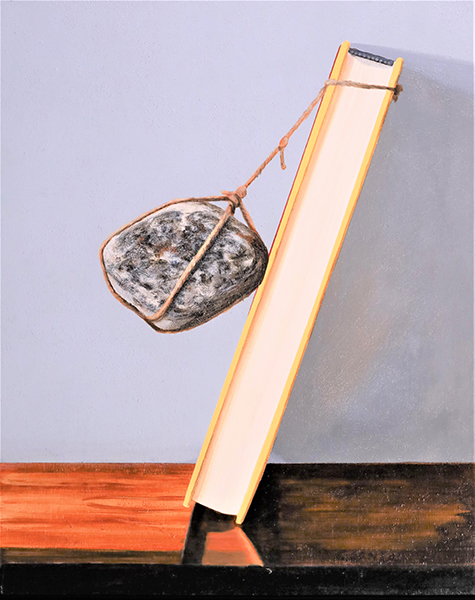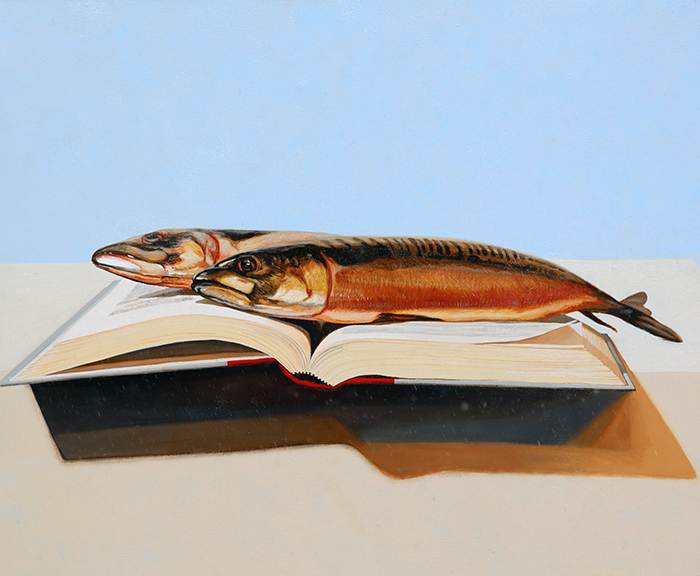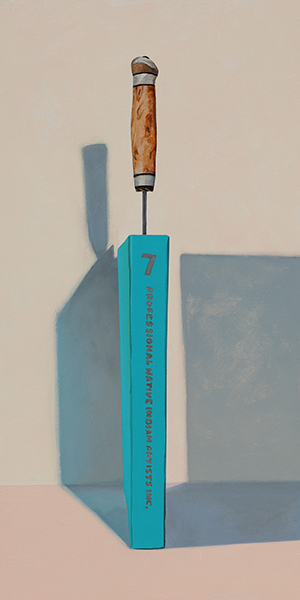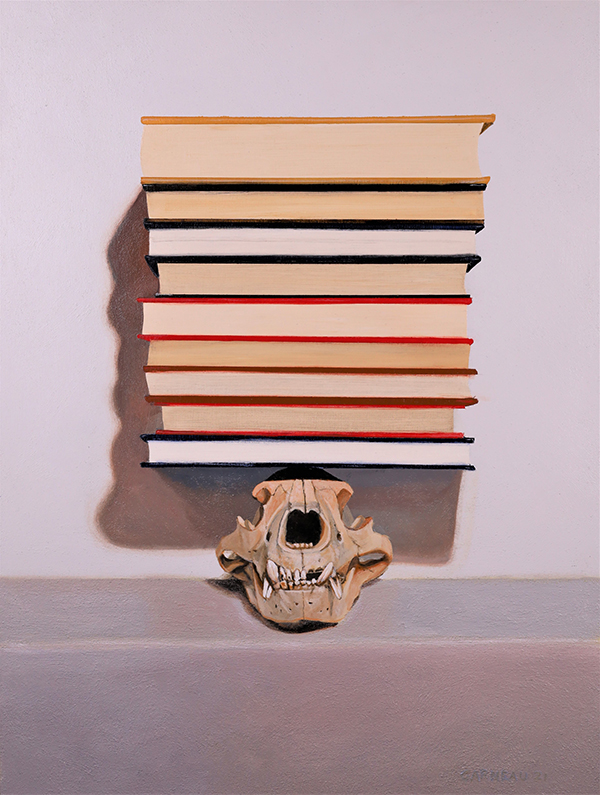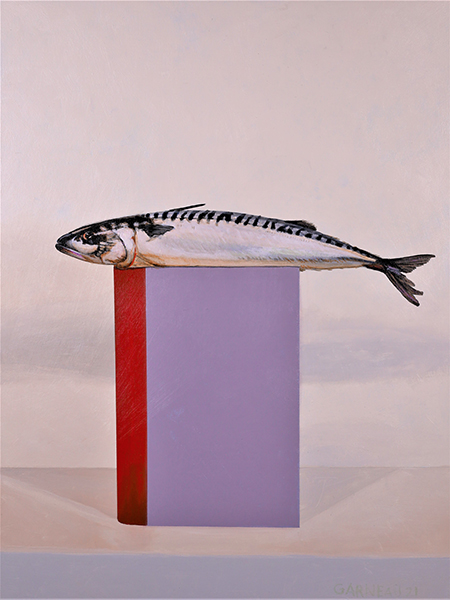David Garneau
David Garneau - Biography
David Garneau (Métis) is a Professor of Visual Arts at the University of Regina. He is a painter, curator and critical art writer who engages creative expressions of Indigenous contemporary ways of being. Garneau curated Kahwatsiretátie: The Contemporary Native Art Biennial (Montreal, 2020) with assistance from Faye Mullen and rudi aker; co-curated, with Kathleen Ash Milby, Transformer: Native Art in Light and Sound, National Museum of the American Indian, New York (2017); and With Secrecy and Despatch, with Tess Allas, an international exhibition about massacres of Indigenous people, and memorialization, for the Campbelltown Art Centre, Sydney, Australia (2016); and Moving Forward, Never Forgetting, with Michelle LaVallee, an exhibition concerning the legacies of Indian Residential Schools, other forms of aggressive assimilation, and (re)conciliation, at the Mackenzie Art Gallery in Regina (2015). Recent essays include: “From Indian to Indigenous: Temporary Pavilion to Sovereign Display Territories.” In Search of Expo 67. 2020. “Electric Beads: On Indigenous Digital Formalism.” Visual Anthropology Review. 2018. Garneau has given keynotes in Australia, New Zealand, the United States, and throughout Canada on issues such as: mis/appropriation; re/conciliation; public art; museum displays; and Indigenous contemporary art. His performance, Dear John, featuring the spirit of Louis Riel meeting with John A. Macdonald statues, was presented in Regina, Kingston, and Ottawa. David recently installed a large public art work, the Tawatina Bridge paintings, in Edmonton. His paintings are in numerous public and private collections. In 2023 he was awarded the Governor General’s Awards in Visual and Media Arts: Outstanding Achievement.
Photo Credit: Mika Abbott
Solo Exhibitions:
David Garneau: Métissage. Nickle Galleries. Calgary. Curator: Mary-Beth Laviolette. Feb. 2-April 22, 2023.
David Garneau: Still Life Paintings. Assiniboia Gallery, Regina. 2022.
Métis/sage (2009-11): Gould Library, Carleton College, Northfield, Minnesota
Works Art Festival, Manulife Building, Edmonton, 2011
Côté Ouest Gallery. Montreal, 2010
Urban Shaman. Winnipeg, 2009.
Road Kill (2009-11). Curator: Jennifer McRorie. Toured nineteen centers in SK: Chapel Gallery, North Battleford; Quill Plains Gallery, Wadena; Biggar Museum and Gallery, Biggar; Moose Jaw Cultural Centre, Moose Jaw; Estevan Art Gallery & Museum, Estevan: Melville Community Works, Melville; Allie Griffin Art Gallery, Weyburn; Shurniak Art Gallery, Assiniboia; Grand Coteau Heritage and Cultural Centre, Shaunavon; Kipling Community Centre, Kipling; Watrous Art & Cultural Centre, Watrous; Last Mountain Lake Cultural Centre, Regina Beach; Central Park Library/Arts Centre, Nipawin; Mistasinik Place, La Ronge; Prince Albert Arts Centre, Prince Albert; Tisdale Community Library, Tisdale.
Close Strangers; Distant Relations. Mackenzie Art Gallery. Curatorial/artistic intervention into the collection; with poetic audio tour, 2009.
Along the Carlton Trail. Godfrey Dean Art Gallery, Yorkton, SK, 2008.
Road Trip. Mysteria Gallery, Regina, SK, 2008.
Beaded Maps. Campus Saint-Jean, Pavilion Lacerte, Edmonton, 2008.
Consider the Sacred Wood, Batoche National Historical Site, 2007
Cowboys and Indians (and Métis?), Esplanade Gallery, Medicine Hat; and Harcourt House Gallery, Edmonton, 2006; Moose Jaw Museum and Art Gallery; Art Gallery of Prince Albert; and Estevan Art Gallery, SK., 2005; Artcite, Windsor, ON; and Art Gallery of South Western Manitoba, Brandon, MB, 2004; Ace Art, Winnipeg, and Keyano Art Gallery, Fort McMurray, 2003.
Peripheral Pictures, Rosemont Art Gallery, Regina, and Brock University Senate Chambers, St. Catherines, ON, 2002.
Sex, Violence and the Death of Heroes, Antechamber Gallery, Regina, 2000.
Man Trouble, The Prairie Art Gallery, Grande Prairie, 1998.
Diaper Paintings, The New Gallery, Front Space, Calgary, 1998.
Recent Paintings, Virginia Christopher Gallery, Calgary, 1998.
Metaphorical Pictures, Virginia Christopher Gallery, Calgary, 1989.
Paraphrase, Marion Nichol Art Gallery, Calgary, 1988.
Drawing on Insomnia, Little Gallery, University of Calgary, 1987.
Permanent Collections:
The National Gallery of Canada (long-term loan)
The Canadian Consulate, New York
The Canadian Embassy, Athens
The Canadian Consulate, Los Angeles
The Canadian Museum of History, Gatineau QC
Canadian Parliament Buildings
Foreign Affairs, Trade and Development Canada
The Mackenzie Art Gallery
Mendel Art Gallery
Dunlop Art Gallery
The Glenbow Museum
NONAM, Zurich
Musée de la civilisation, Québec City
Montreal Museum of Fine Arts
City of Calgary
City of Regina
Imperial Oil
Cenovous Energy, Calgary
TD Bank, Regina
University of Regina
University of Lethbridge
University of Guelph
University of Alberta
Faculté Saint-Jean
The SaskArts Board
The Alberta Foundation for the Arts
Paul Martin Foundation
Portage College Museum
Artist Statement: Quilts gather bits of everyday material culture together to make a new whole that is itself and yet also only a compilation of past things. They are like people. As a child, I was fascinated by quilts my Mum made from the family's old clothes. Each blanket held intimate memory fragments of a generation: traces of our personal lived experiences and the tastes of that decade's popular culture. I often lay in bed making up stories inspired by these collages. "The Hat Makes the Man" is a collage/quilt of mid-last century Classics Illustrated comic books that I read in my youth. The speech bubbles are left blank to encourage the viewer to make up their own stories. [The quilt pantings often incorporate] playful design containing subtle narrative: the clash of Settler and First Nations—wagons ring the composition, hemming in the Aboriginal people leading to violence. These paintings suggest that popular culture forms early imaginations and our sense of history and self. In his still life work, Garneau describes the complexity of being a contemporary Indigenous person, academic, and artist. Many of the paintings in this series feature books, rocks, and twine arranged to represent these joys and struggles. Indigenous knowledge keepers often feel conflicted about the need to share their knowledge and a concern that turning it into English and a text might not do the knowledge justice, and that books might displace them. The symbol of the rock, for example, refers to grandfather/Indigenous knowledge and juxtaposed with a single or stack of books, suggests that Indigenous knowledge is more than what can be contained in a book, or that Indigenous is a combination of teachings from a specific earth site and from books. Land-based knowledge grounds Indigenous ways of knowing and being, but books authored by Indigenous folks are also required if we are to provide truer representations of Indigenous people and knowledge. The choices of books—theory, biography, and literature—show the growing richness of Indigenous writing.
